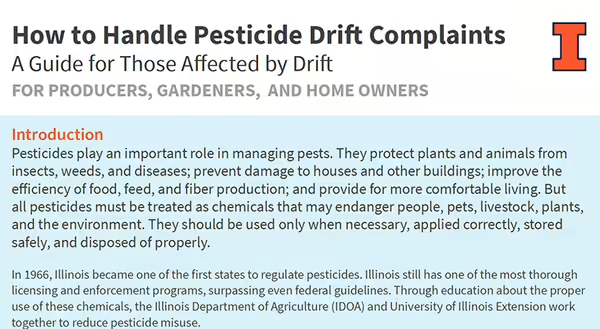
Pesticides play an important role in managing pests, but they must be used responsibly and according to label directions so that they don’t endanger people, pets, livestock, plants, and the environment. While there is much work done to educate pesticide users about safety, and most applications are made according to label directions, cases of misuse still occur, unfortunately. The most common type of pesticide misuse is pesticide drift, and when it occurs, emotions can run high while seeking answers. Additionally, time is of the essence.
While written for producers and gardeners, this guide could be beneficial to really anyone affected by drift. It can be used to help navigate the often challenging task of determining if pesticide drift could be the cause of injury to sensitive plants and, if so, what to do about it. The guide discusses:
- What drift is
- How it can be prevented
- What if it occurs
- Who can help
- What role each involved party plays
- The drift complaint process
- Answers to common questions concerning drift injury and complaints
- Contacts for suspected exposure and first aid
- Health and environmental concerns about pesticides
- Additional resources
This guide can also be found on the University of Illinois Pesticide Safety Education Program website.
ABOUT THE AUTHOR: Michelle Wiesbrook provides subject matter expertise and training in pesticide safety with an emphasis on horticultural weed science. She serves as the Illinois Pesticide Review newsletter editor, collecting and organizing material; and co-coordinates social media information for the PSEP program and ensures its timely publication. Her other interests include herbicide injury and invasive species.